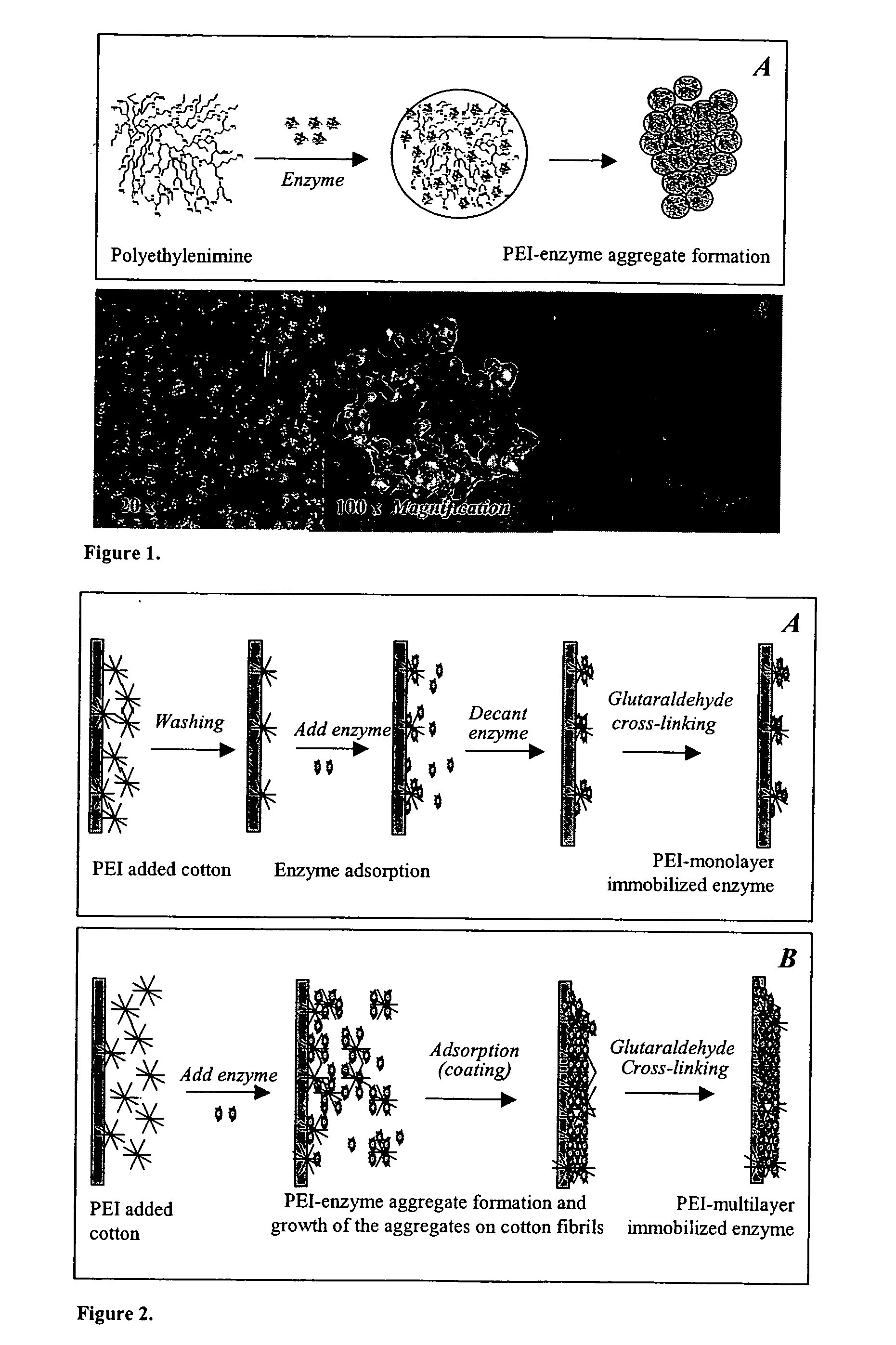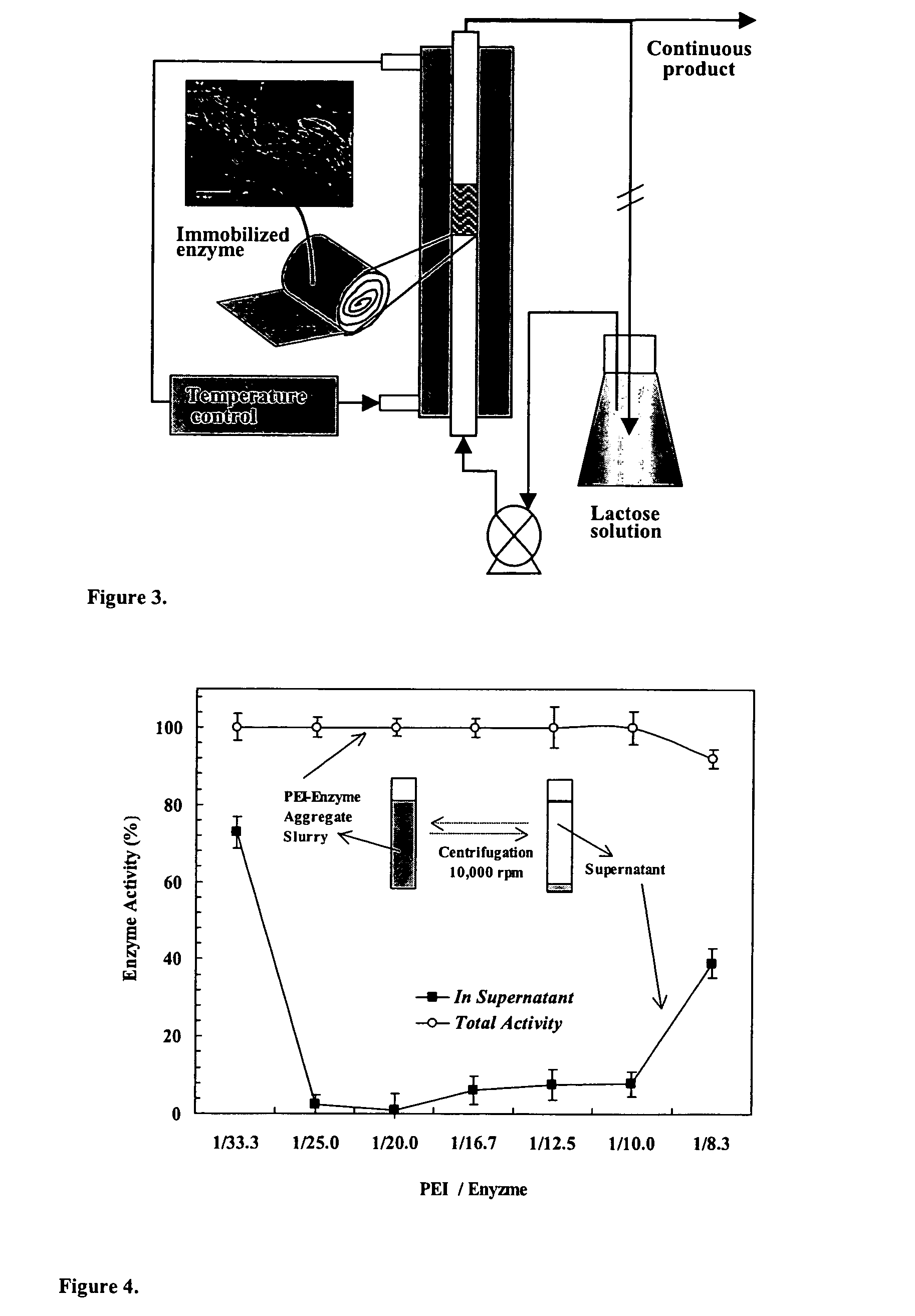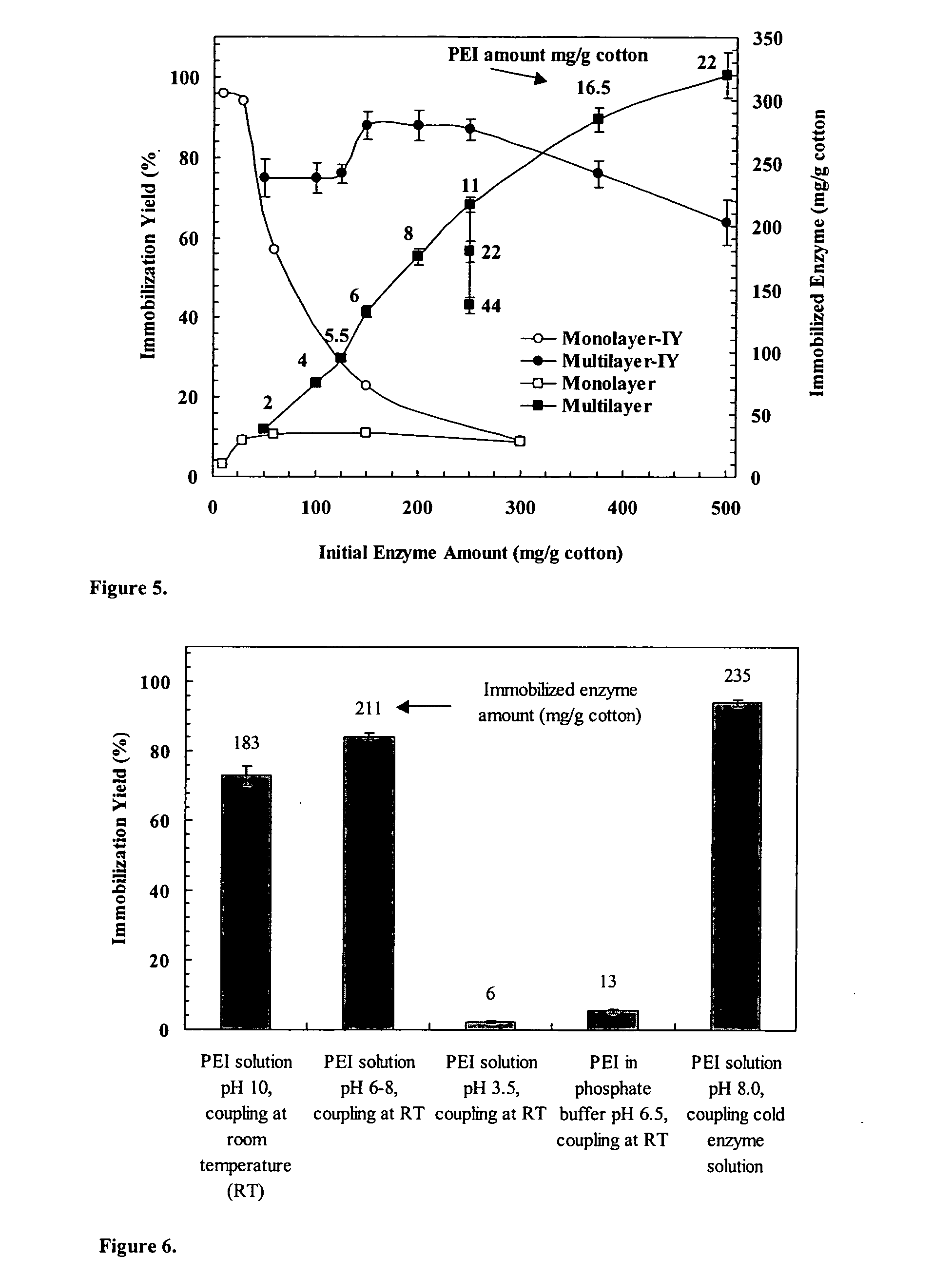Immobilization of enzyme on a fibrous matrix
a technology of fibrous matrix and immobilization of enzymes, which is applied in the field of immobilization of enzymes on fibrous matrix, can solve problems such as large burden
- Summary
- Abstract
- Description
- Claims
- Application Information
AI Technical Summary
Benefits of technology
Problems solved by technology
Method used
Image
Examples
example 1
[0047] Enzyme and Reagents. β-galactosidase from A. oryzae (fungal lactase activity 100,000 U / g) was obtained from Genencor International (Rochester, N.Y.). Each gram of the enzyme contained 100,000 fungal lactase units (FLU). One unit is defined as the amount of enzyme that liberates 1 μmol of o-nitrophenol from o-nitrophenyl-β-galactopyranoside (ONPG) per min at pH 4.5 and 37° C. (Genencor). Lactose (99.9%) from whey was from Brewster Dairy (Brewster, Ohio). Polyethyleneimine [PEI; (C2H5N)n] as 50% (w / v) (number average molecular weight 60,000; average molecular weight 750,000) and glutaraldehyde as 25% (w / v) aqueous solutions were from Sigma (St. Louis, Mo.). Glacial acetic acid (Fisher) and sodium acetate trihydrate (J. T. Baker, Phillipsburg, N.J.) were used to prepare acetic acid buffer. Cotton terry cloth and nonwoven poly(ethylene terephthalate) (PET) fabrics were obtained locally. All solutions for PEI, gluteraldehyde, and enzyme were prepared with distilled water. The solu...
example 2
[0052] Reaction Kinetics. GOS formation kinetics with immobilized enzyme was studied in a recycle batch packed-bed reactor (FIG. 3). A small piece of cotton cloth that contained immobilized PEI-enzyme aggregates (˜0.4 g) was placed in the glass column reactor (i.d. of 9 mm) with a water jacket maintained at a constant temperature (40° C., unless otherwise noted). The lactose solution in the flask (total solution volume, ˜85 mL) was continuously recirculated through the immobilized enzyme reactor at a high flow rate of 90 mL / min. The lactose solution was prepared by dissolving lactose in 0.1 M acetic acid buffer (pH 4.5, unless otherwise noted). Samples (100 μL or 0.1 mL) were taken from the flask at appropriate time intervals and analyzed for sugar contents by high performance liquid chromatography (HPLC). The reaction kinetics was studied at 400 g / L lactose solution for three different levels of enzyme loading (35, 130, 240 mg enzyme / g cotton), four different pH values (4.15, 4.5, ...
example 3
[0056] Scanning Electron Microscopy (SEM). Fibrous matrix samples were dried in a critical point dryer. After being sputter-coated with gold / palladium, the samples were examined using a scanning electron microscope (Philips XL-30).
[0057] Analytical Methods. Enzyme Activity Assay. The activity of cotton cloth immobilized enzyme made in accordance with an embodiment of the present invention was measured with 100 g / L lactose as the substrate in 0.1 M acetic acid buffer (pH 4.5) at 40° C. in a shaker-incubator at 450 rpm for about 5 min. After incubation, the cloth was removed from the reaction mixture and a volume of sample taken and mixed at one-to-one ratio with 0.1 N NaOH to inactivate possible free enzyme activity leached during activity determination. The glucose concentration in the sample was determined with a glucose analyzer (YSI 2700 Select, Yellow Springs, Ohio). The activity of the immobilized enzyme was determined by direct comparison of the reading with the standard curv...
PUM
| Property | Measurement | Unit |
|---|---|---|
| porosity | aaaaa | aaaaa |
| concentration | aaaaa | aaaaa |
| solubility | aaaaa | aaaaa |
Abstract
Description
Claims
Application Information
 Login to View More
Login to View More - R&D
- Intellectual Property
- Life Sciences
- Materials
- Tech Scout
- Unparalleled Data Quality
- Higher Quality Content
- 60% Fewer Hallucinations
Browse by: Latest US Patents, China's latest patents, Technical Efficacy Thesaurus, Application Domain, Technology Topic, Popular Technical Reports.
© 2025 PatSnap. All rights reserved.Legal|Privacy policy|Modern Slavery Act Transparency Statement|Sitemap|About US| Contact US: help@patsnap.com



